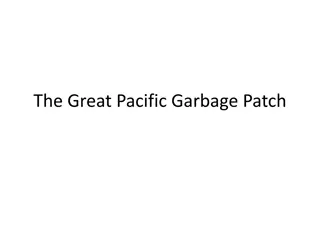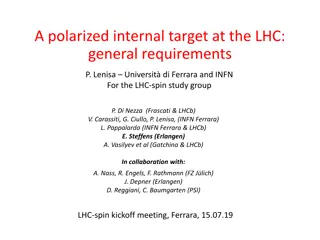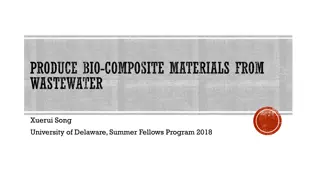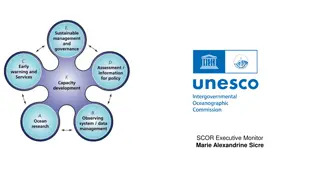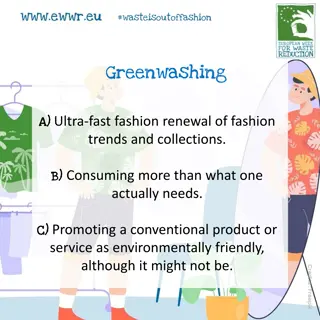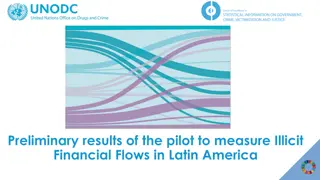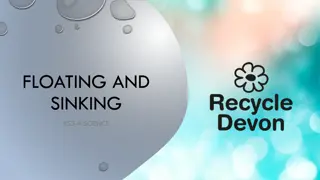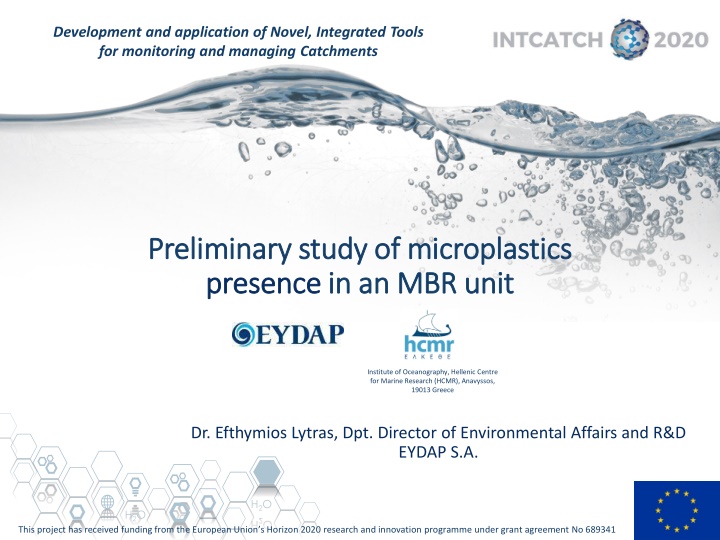
Integrated Tools for Monitoring and Managing Catchments: Microplastics Study
"Explore the presence and effects of microplastics in MBR units and WWTPs, highlighting their origins, potential bioaccumulation, and the role of sewer mining technology in managing wastewater pollution. This project at HCMR delves into the impacts of microplastics on marine ecosystems, offering insights into reducing contamination risks and enhancing environmental sustainability."
Download Presentation

Please find below an Image/Link to download the presentation.
The content on the website is provided AS IS for your information and personal use only. It may not be sold, licensed, or shared on other websites without obtaining consent from the author. If you encounter any issues during the download, it is possible that the publisher has removed the file from their server.
You are allowed to download the files provided on this website for personal or commercial use, subject to the condition that they are used lawfully. All files are the property of their respective owners.
The content on the website is provided AS IS for your information and personal use only. It may not be sold, licensed, or shared on other websites without obtaining consent from the author.
E N D
Presentation Transcript
Development and application of Novel, Integrated Tools for monitoring and managing Catchments Preliminary study of microplastics Preliminary study of microplastics presence presencein an MBR unit in an MBR unit Institute of Oceanography, Hellenic Centre for Marine Research (HCMR), Anavyssos, 19013 Greece Dr. Efthymios Lytras, Dpt. Director of Environmental Affairs and R&D EYDAP S.A. H2O H2O This project has received funding from the European Union s Horizon 2020 research and innovation programme under grant agreement No 689341
Development and application of Novel, Integrated Tools for monitoring and managing Catchments Microplastics: All plastics of size <5mm Microplastics effects Invertebrates ingest MPs MPs contain additives (phthalates, flame retardants) and adsorb hydrophobic pollutants (PCBs, pharmaceuticals) Bioaccumulation potential increases with decreasing size MPs block the digestive tract, cause mechanical stress and provide a pathway to transfer contaminants to the organism s body and to the food chain H2O H2O
Development and application of Novel, Integrated Tools for monitoring and managing Catchments WWTPs Barrier or entrance route for MPs to aquatic environment? Not specifically designed to remove MPs High reduction ability of MPs but also significant source given the large volumes of effluents discharged Swedish, Helsinki and Chicago (IL) WTTPs reported higher concentrations of MPs in the discharge point than in the receiving body Sewer mining: potential threat for terrestrial pollution H2O H2O
Development and application of Novel, Integrated Tools for monitoring and managing Catchments MPs origins Fibers from washing of clothes Microbeads and irregular shaped particles from personal care products Different habits and weather conditions contribute to the variability of MP conc in WWTPS in different countries H2O kg of clothes washed per person per week H2O Germany 4,5 6,0 USA 12
Development and application of Novel, Integrated Tools for monitoring and managing Catchments SEWER MINING TECHNOLOGY Sewer mining is the process of tapping into a wastewater system, and extracting wastewater, which is then treated and used as recycled water H2O H2O Compact sewer mining systems protect the environment in many ways, such as saving fresh water while creating green spots without further stressing the finite water resources, and all that in a cost efficient way 5
Development and application of Novel, Integrated Tools for monitoring and managing Catchments SEWER MINING TECHNOLOGY Implemented by In FP7 project H2O and H2O2 project H2O 6
Development and application of Novel, Integrated Tools for monitoring and managing Catchments Scope of this work To estimate the concentrations and abundance of MPS in domestic raw wastewater of Athens To estimate the removal of MPs in an MBR unit To estimate the potential landfill pollution when reusing water H2O H2O
Development and application of Novel, Integrated Tools for monitoring and managing Catchments Sampling was conducted during 2 periods in June 2019: 5/6/2019 to 11/6/2019 and 12/6/2019 to 20/6/2019 Incoming influent was sampled collection tank at the end of each period. (2.5 L) from a A total volume of ~ 12 m3of final MBR effluent were collected during each period. H2O All samples were filtered through a series of inox filters with cut-offs at 300 m, 200 m and 100 m using a filtering device (Talvitie et al., 2015). H2O The influent was further filtered in the lab through a 1.2 m GF/C filter for identification of particles <100 m
Development and application of Novel, Integrated Tools for monitoring and managing Catchments Laboratory processing and analysis of MPs 300 m 200 m 40oC 24h 100 m 50-100 m H2O Counting & sorting + 2 2 40oC ATR-FTIR spectroscopy for polymer identification If needed H2O To be analyzed
Development and application of Novel, Integrated Tools for monitoring and managing Catchments 300 m filter 200 m filter 500 m Photos of MPs in the 4 filters of influent Size class separation is effective on the smallest dimension of the particles 500 m H2O 100 m filter 1.2 m GF/C filter H2O 500 m
Development and application of Novel, Integrated Tools for monitoring and managing Catchments 200 m filter 300 m filter 500 m 500 m H2O 100 m filter Photos of MPs in the 3 filters of MBR effluents Size class separation is effective on the smallest dimension of the particles H2O 500 m Long fibers found in smaller screens high length to width ratio enabling them to pass longitudinally through filters
Development and application of Novel, Integrated Tools for monitoring and managing Catchments MPs concentrations (averages of the 2 samplings) and retention efficiency of the MBR Retention efficiency Size class IN OUT-MBR MPs/L % H2O >300 m 6 0.000 100% 300-200 m 11 0.001 99.994% 200-100 m 9 0.001 99.984% H2O 50-100 m 13 -* - 43 0.002 99.995% 12
Development and application of Novel, Integrated Tools for monitoring and managing Catchments Indicative size class distribution of MPs and types of particles found in influent and for the traces of MPs found in the MBR final effluent H2O In all cases H2O fibers/filaments were dominant by 68% in influent and 42% in MBR effluent 13
Development and application of Novel, Integrated Tools for monitoring and managing Catchments MPs species percentage in the influent of various WWTPs Italian (fed by combined network) 63 m 6% 21% 73% Detroit 20 m 62% 23% 0% Northfield 20 m 55% 26% 0% Helsinki 20 m 67% 10% 8% 15% (flakes) Other 25 m 80% 10% 0% Vancouver 63 m 66% 28% 0% EYDAP 100 m 68% 7% 24% Smallest pore size Fibers/filaments fragments films H2O microbeads 11% 16% 10% 0% 5% 0% MPs species percentage in the effluent of various WWTPs Northfield AnMBR 89% Helsinki tertriary 30% EYDAP MBR 42% H2O Fibers/filaments fragments films microbeads 11% 0% 0% 60% 1% 7% 45% 0% 9% (flakes) 14
Development and application of Novel, Integrated Tools for monitoring and managing Catchments MBR removal MPs/L Northfield pilot AnMBR 99.4% 0.500 Northfield Tertiary treatment 97.2% Other Tertiary 0.280 H2O Other RO 0.220 Advanced filtration German WWTP 98.0% Mikkeli pilot MBR 99.9% 0.005 H2O EYDAP MBR 99.9% 0.002 15
Development and application of Novel, Integrated Tools for monitoring and managing Catchments Conclusions Results are on par with the current literature No consistent protocol in analytical techniques may lead to bias H2O2treatment destroys cotton and rayon fibers but may also destroy sensitive MPs Without FT-IR confirmation, many non plastic particles may be identified as MPs H2O H2O
Development and application of Novel, Integrated Tools for monitoring and managing Catchments Conclusions Combined sewage systems of fragments Fibers/Filaments and films dominate the effluent o Fibers dominate the effluent of 22 out of 27 US WTTPs Absence of microbeads contradictory to the great concern (Microbead-free Waters Act signed by Pres. Obama) but on par with San Fransisco and Northfield studies o Most personal care products-derived MPs are of irregular size, classified as fragments or flakes overflows increase number H2O H2O
Development and application of Novel, Integrated Tools for monitoring and managing Catchments Conclusions Membrane treatment may reduce the numbers of MPs in the effluent tenfold Tertiary sand filtration reintroduce MPs in the WWTP through backwashing -> possible biodegradation and permanent removal RO is not always a barrier due to larger size pores, membrane imperfections, small gaps between pipework H2O H2O
Development and application of Novel, Integrated Tools for monitoring and managing Catchments Future work: Detailed size and area data from microscope image analysis H2O Identification of polymers using ATR-FTIR spectroscopy More replicates of the incoming untreated effluents H2O Institute of Oceanography, Hellenic Centre for Marine Research (HCMR), Anavyssos, 19013 Greece
Development and application of Novel, Integrated Tools for monitoring and managing Catchments Thank you for your attention! H2O H2O 20

